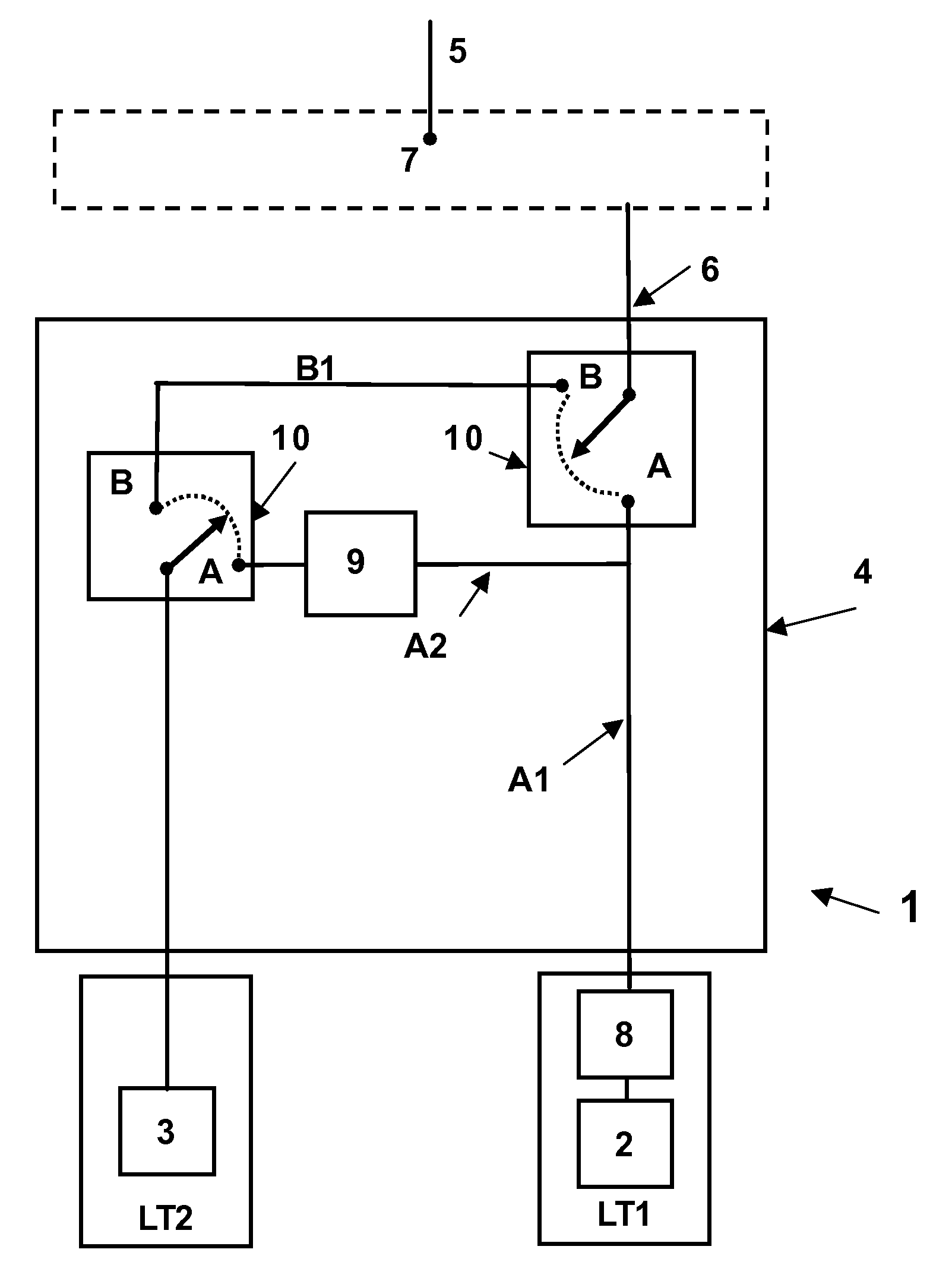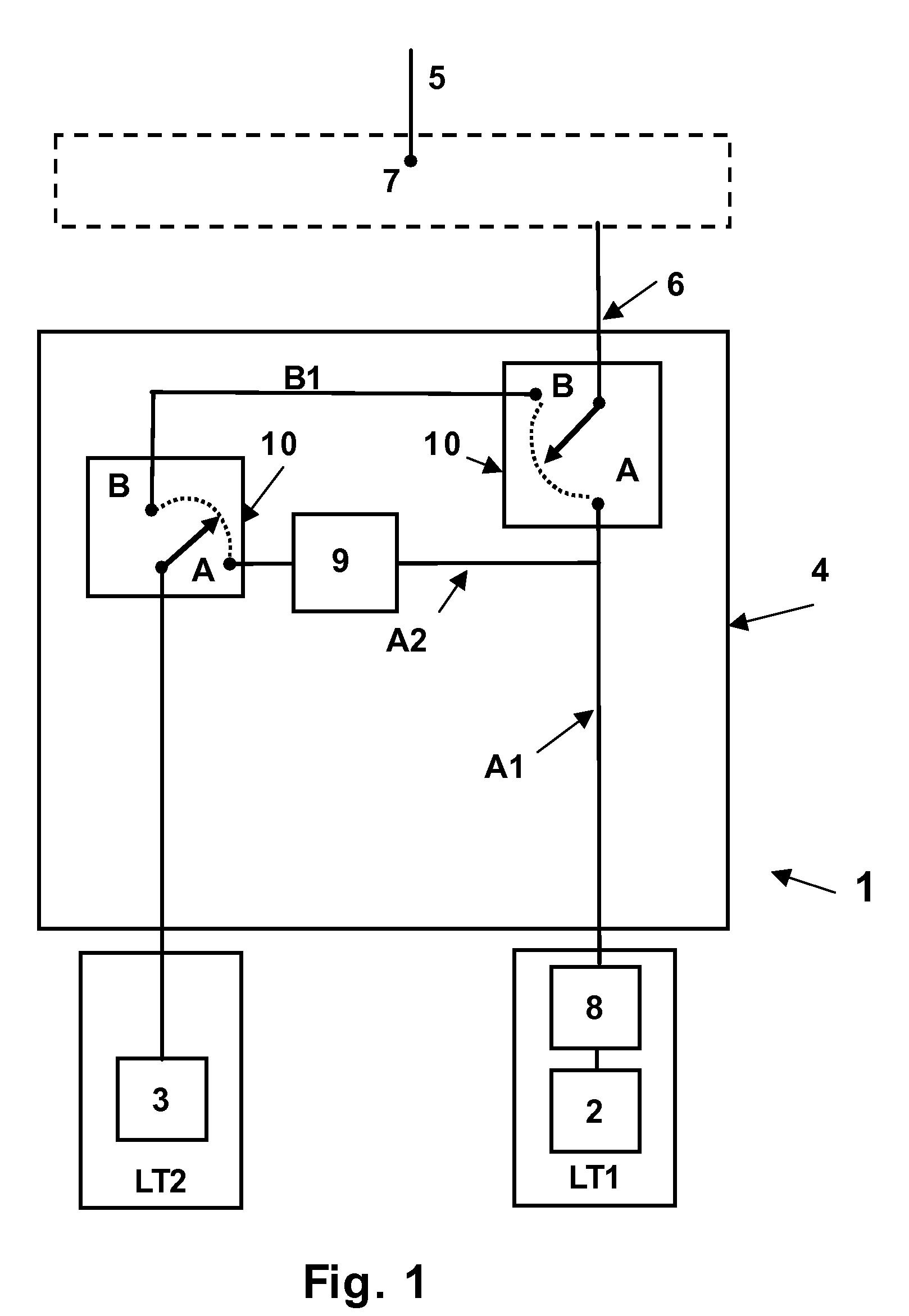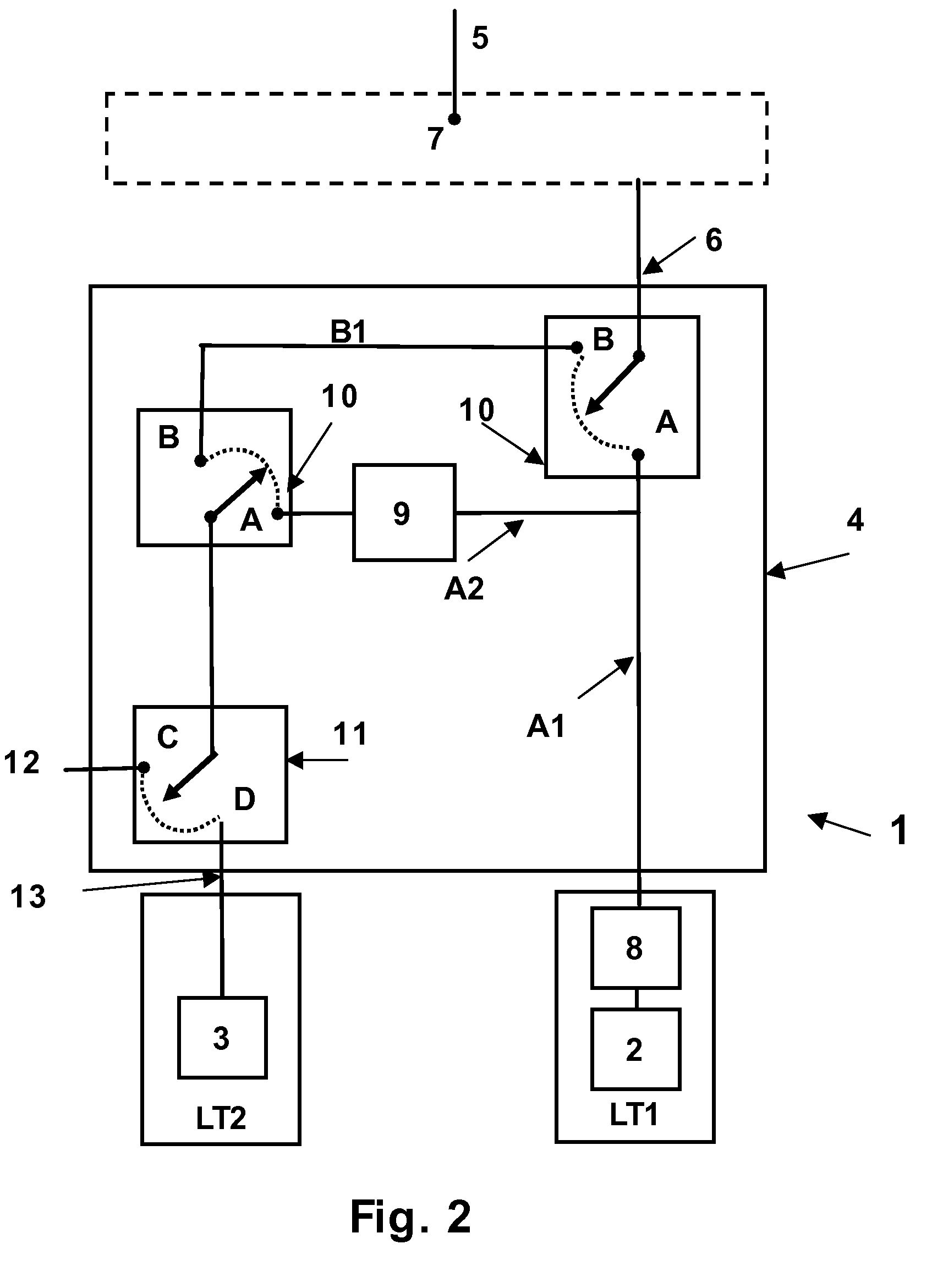Line termination arrangement with combined broadband and narrowband services
a technology of combined broadband and narrowband, applied in the direction of subscriber line interface circuits, digital transmission, data switching networks, etc., can solve the problems of loss of revenue, complicated wiring work involved in providing a subscriber to a new service, and increasing the cost of providing the new servi
- Summary
- Abstract
- Description
- Claims
- Application Information
AI Technical Summary
Benefits of technology
Problems solved by technology
Method used
Image
Examples
first embodiment
[0046]FIG. 3 shows the present invention. In this figure, features similar to those of FIGS. 1 and / or 2 are given the same reference numerals. FIG. 3, however relates to an alternative use of a first switching means 14 and a second switching means 15 within the common interface device 4 of the line termination 1 as will be described below.
[0047]An example of a situation where this first embodiment of the present invention is used, is where there is a need to be able to maintain broadband service availability from an auxiliary equipment, in addition to the service provided from the first line termination LT1 (as discussed with reference to FIGS. 1 and 2). For example, in case of local loop unbundling, it may become necessary that while narrowband services are provided through the second line termination LT2 on a per common port basis, the broadband services can be selected either from the connectivity provided by the first line termination LT1 or from the auxiliary system as will be ...
second embodiment
[0059]FIG. 4 shows the present invention wherein the first switching means 14 and the second switching means 15 as described in FIG. 3, are combined with a third switching means 11 the function of which is similar to that described in relation to the switching means 11 in FIG. 2. In this figure, features similar to those of previous figures are given the same reference numerals.
[0060]An example of a situation where this embodiment of the present invention may be used, is where there is a need to provide a smooth migration from old equipment (e.g. Local exchanges) to new equipment, as described in relation to the line termination arrangement of FIG. 2, in combination with the service migration capabilities as described in relation to the first embodiment of the present invention (in relation to FIG. 3).
[0061]Thus while the first and second switching means 14 and 15 are capable of combing the use of a narrow band source (through the second line termination LT2) with either a choice of...
PUM
 Login to View More
Login to View More Abstract
Description
Claims
Application Information
 Login to View More
Login to View More - R&D
- Intellectual Property
- Life Sciences
- Materials
- Tech Scout
- Unparalleled Data Quality
- Higher Quality Content
- 60% Fewer Hallucinations
Browse by: Latest US Patents, China's latest patents, Technical Efficacy Thesaurus, Application Domain, Technology Topic, Popular Technical Reports.
© 2025 PatSnap. All rights reserved.Legal|Privacy policy|Modern Slavery Act Transparency Statement|Sitemap|About US| Contact US: help@patsnap.com



